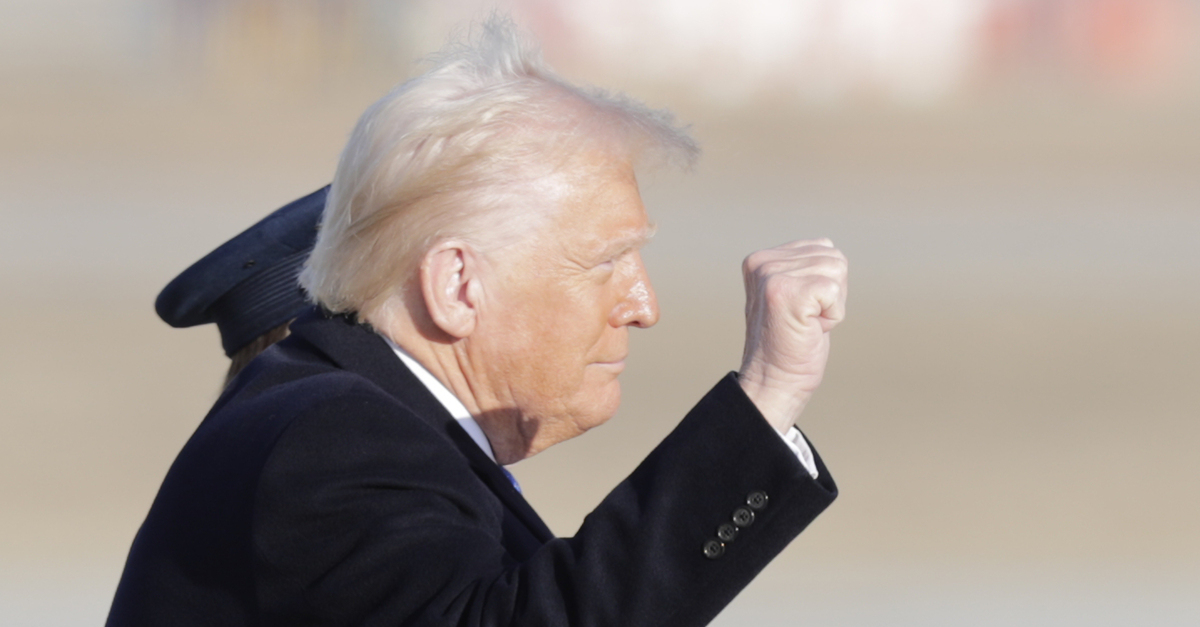The Trump administration is openly violating a federal court order that barred the government from enforcing a controversial spending freeze, according to an emergency motion filed late Friday.
On Jan. 31, U.S. District Judge John McConnell, a Barack Obama appointee, issued a temporary restraining order that found the spending freeze both unconstitutional and in violation of a federal law that blocks government action deemed “arbitrary and capricious.”.. Continue reading here ▶
Now, the several plaintiff states, led by New York Attorney General Letitia James, a Democrat, are back in the same Rhode Island federal court — telling the judge his order is simply being ignored.
“The sands have only continued to shift since January 31,” the emergency motion to enforce the restraining order reads. “As explained below, there has been an ever-changing kaleidoscope of federal financial assistance that has been suspended, deleted, in transit, under review, and more since entry of the Order.”
On Jan. 27, the Office of Management and Budget (OMB) issued a memo in an attempt to make good on a series of executive orders issued by President Donald Trump, which outlined spending priorities. Within hours, the federal government lurched into chaos.
In response to the specter of frozen entitlement systems, downed websites, and a general state of panic across administrative agencies, the administration quickly performed a volte-face and rescinded the OMB memo with a terse second memo that also directed employees to follow up with agency lawyers if they had any questions.
Upon backtracking, face-saving measures ensued.
White House press secretary Karoline Leavitt cast doubt on the second OMB memo in a post on X (formerly Twitter).
“This is NOT a rescission of the federal funding freeze,” Leavitt wrote. “It is simply a rescission of the OMB memo. Why? To end any confusion created by the court’s injunction. The President’s EO’s on federal funding remain in full force and effect, and will be rigorously implemented.”
In his 13-page restraining order, McConnell cited Leavitt’s post and other factors as evidence of “the government’s transparent efforts to evade” oversight by the federal court system.
In no uncertain terms, the judge barred the Trump administration from “reissuing, adopting, implementing, or otherwise giving effect to the OMB Directive under any other name or title or through any other Defendants (or agency supervised, administered, or controlled by any Defendant).”
Since then, a week has passed.
Now, the plaintiffs say there is very little to show that the government has complied with the order. In fact, they allege the opposite.
“Plaintiff States and entities within the Plaintiff States continue to be denied access to federal funds,” the motion reads. “These denials continue to cause immediate irreparable harm.”
The motion frames the issue as all but existential.
“Jobs, lives, and the social fabric of life in the Plaintiff States are at risk from the disruptions and uncertainty that have continued now a full week after entry of the Order,” the filing argues. “As this Court noted, executive action that is ‘in name-only and may have’ proceeded ‘simply to defeat the jurisdiction of the courts’ weighs in favor of temporary but decisive action. Unfortunately, such action is once again necessary on an urgent basis.” with new ways to try and freeze funding, the motion argues.
“Defendants have — for the first time this week — taken the position that certain federal funds, including federal financial assistance under the Inflation Reduction Act and the Infrastructure Improvement and Jobs Act, is outside the scope of the Court’s Order, a position contradicted by the plain text of the Order and the notice Defendants previously filed with the Court explaining their view of the scope of the Order,” the motion goes on.
To hear the plaintiffs tell it, none of this is excusable even though “it is imaginable that a certain amount of machinery” would need to be recalibrated to get things back on track since funding was paused.
A great deal of the consternation has to do with time.
“Defendants contemplated an all-of-government ‘pause’ on federal funding could be implemented in the less than 24 hours between when the OMB Directive issued and when it took effect,” the motion goes on. “Yet, as to a number of funding sources that provide critical services in Plaintiffs’ States, the situation has not changed at all nearly a week after the Court’s Order.”
In other words, New York and the other states complain that while the funding freeze was implemented in short order, the government is making something of a leisurely effort to unplug the dams.
“[T]he Court should enforce the clear and unambiguous text of its temporary restraining order and order Defendants to immediately restore funds until the preliminary injunction motion can be heard and decided,” the motion argues. “The Court should further Order that Defendants immediately take every step necessary to effectuate the Order, including clearing any administrative, operational, or technical hurdles to implementation.”
In a separate, 78-page filing submitted to the court simultaneously, the plaintiffs also ask the court to issue a preliminary injunction. An injunction would have the same substantive impact as a temporary restraining order but would last until the case is resolved or until a reviewing court overturns McConnell’s ruling.
“The fact that executive agencies appear to have restored some funding only after being provided with notice of the Court’s [temporary restraining order] is only further evidence that the Funding Freeze is very much live and that a Court order remains necessary to provide Plaintiff States with relief from that unlawful action,” the second motion reads.
